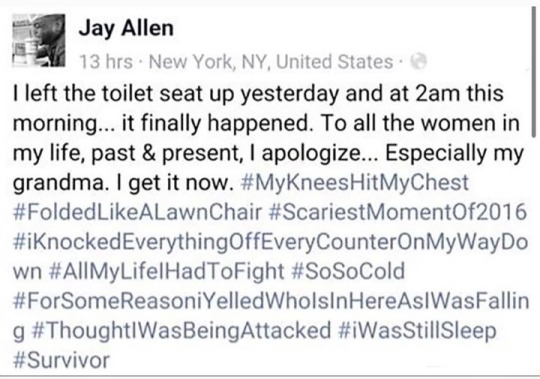Text
I had a professor in college who used to start solving every problem with the same dialogue.
Proff: What’s the first step to solving any problem?
Class: Don’t panic.
Proff: And why is that?
Class: Because we know more than we think we do.
I think about that a lot tbh. It didn’t occur to me until much later that he meant for us to apply that dialogue outside of the classroom to any problem. Because we always know more than we think we do. We are all an amalgam of random information that ends up being relevant with surprising frequency.
53K notes
·
View notes
Text
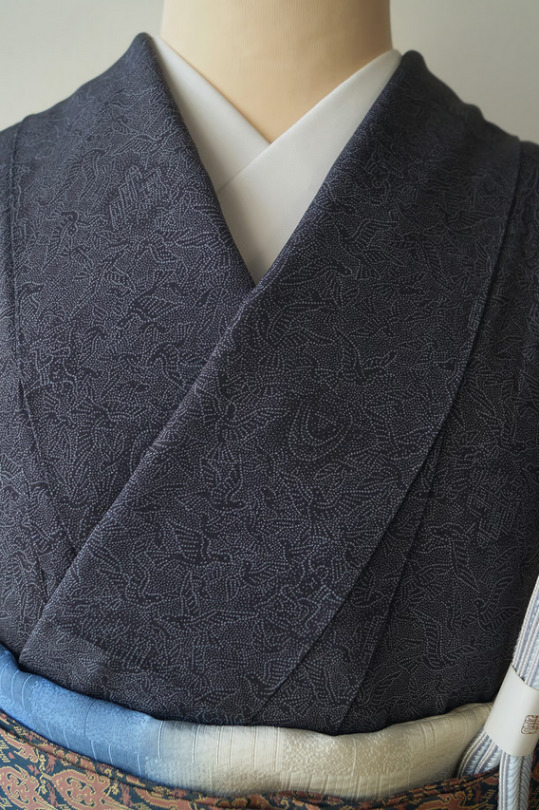
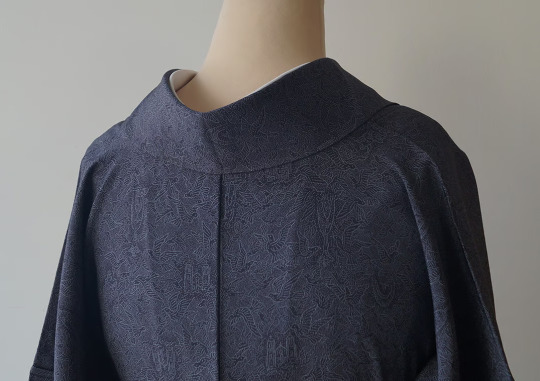

Fantastic Edo-komon kimono created by national treasure Rokutani Baiken, with an allegory pattern for "Peace" showing doves flying above people and buildings.
Edo komon is a type of kimono with itty-bitty-small patterns. Those are set on fabric using Ise-katagami (paper stencils, made waterproof with persimmon juice) and nori (paste/glue made from glutinous rice or wheat flour), and fabric is then dyed before washing the glue away.
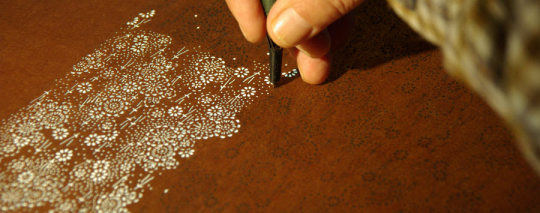
210 notes
·
View notes
Note
So I've seen conflicting stories about the colour black in history.
Some say it's very expensive and hard to maintain, so that's why rich merchants wore black. Evidence in portraits.
Some say that for dyes it's on the cheaper side actually.
Some say the expensive black doesn't come from dye but rather the colour of the animal, so black fabric comes from black fibre which comes from black sheep. How exactly would black sheep be more expensive than regular white sheep?
Which one is right? I know this is probably influenced by which century it's set in, like maybe some eras have an easier time getting black dye
I found a well-sourced blog post about this, luckily, because I'm a 19th-century focused researcher and I've heard conflicting things about black in earlier periods. It seems to be that high-quality black-dyed fabric was difficult to obtain in the west from the Middle Ages potentially through the 18th century because it required massive amounts of dye to get the color very deep ("true black"). Lesser black shades were quite common, though, so black, period, doesn't seem to be more expensive than any other color. Possibly the intensively dyed, deep blacks might have been? But not black in general.
source
Rich merchants did wear black- but so did other people. They just usually didn't have portraits.
The black sheep thing I've never heard before. And anyway, that could only apply to wool- not cotton, linen, silk, leather, etc.
#dyeing#fashion history#medieval europe#heritage sheep breeds#heritage breeds#sheep#textiles#textile history#merino
576 notes
·
View notes
Text
The Mask Trope, and Disfiguremisia in Media
[large text: The Mask Trope, and Disfiguremisia in Media]
If you followed this blog for more than like a week, you're probably familiar with “the mask trope” or at least with me complaining about it over and over in perpetuity. But why is it bad and why can't this dude shut up about it?
Let's start with who this trope applies to: characters with facial differences. There is some overlap with blind characters as well; think of the blindfold that is forced on a blind character for no reason. Here is a great explanation of it in this context by blindbeta. It's an excellent post in general, even if your character isn't blind or low vision you should read at least the last few paragraphs.
Here's a good ol’ tired link to what a facial difference is, but to put it simply:
If you have a character, who is a burn survivor or has scars, who wears a mask, this is exactly this trope.
The concept applies to other facial differences as well, but scars and burns are 99% of the representation and “representation” we get, so I'll be using these somewhat interchangeably here.
The mask can be exactly what you think, but it refers to any facial covering that doesn't have a medical purpose. So for example, a CPAP mask doesn't count for this trope, but a Magic Porcelain Mask absolutely does. Bandages do as well. If it covers the part of the face that is “different”, it can be a mask in the context used here.
Eye patches are on thin ice because while they do serve a medical purpose in real life, in 99.9% of media they are used for the same purpose as a mask. It's purely aesthetic.
With that out of the way, let's get into why this trope sucks and find its roots. Because every trope is just a symptom of something, really.
Roughly in order of the least to most important reasons...
Why It Sucks
[large text: Why It Sucks]
It's overdone. As in — boring. You made your character visibly different, and now they're no longer that. What is the point? Just don't give them the damn scar if you're going to hide it.
Zero connection with reality. No one does this. I don't even know how to elaborate on this. This doesn't represent anyone because no one does this.
Disability erasure. For the majority of characters with facial differences, their scars or burns somehow don't disable them physically, so the only thing left is the visible part… aaand the mask takes care of it too. Again, what's the point? If you want to make your disabled character abled, then just have them be abled. What is the point of "curing" them other than to make it completely pointless?
Making your readers with facial differences feel straight up bad. I'm gonna be honest! This hurts to see when it's all you get, over and over. Imagine there's this thing that everyone bullied you about, everyone still stares at, that is with you 24/7. Imagine you wanted to see something where people like you aren't treated like a freakshow. Somewhat unrealistic, but imagine that. That kind of world would only exist in fiction, right? So let's look into fiction- oh, none of the positive (or at least not "child-murderer evil") characters look like me. I mean they do, but they don't. They're forced to hide the one thing that connects us. I don't want to hide myself. I don't want to be told over and over that this is what people like me should do. That this is what other people expect so much that it's basically the default way a person with a facial difference can exist. I don't want this.
Perpetuating disfiguremisia.
"Quick" Disfiguremisia Talk
[large text: "Quick" Disfiguremisia Talk]
It's quick when compared to my average facial difference discussion post, bear with me please.
Disfiguremisia; portmanteau of disfigure from “disfigurement” and -misia, Greek for hatred.
Also known as discrimination of those mythical horrifically deformed people.
It shows up in fiction all the time; in-universe and in-narrative. Mask trope is one of the most common* representations of it, and it's also a trope that is gaining traction more and more, both in visual art and writing. This is a trope I particularly hate, because it's a blatant symptom of disfiguremisia. It's not hidden and it doesn't try to be. It's a painful remainder that I do not want nor need.
*most common is easily “evil disfigured villain”, just look at any horror media. But that's for another post, if ever.
When you put your character in a mask, it sends a clear message: in your story, facial differences aren't welcome. The world is hostile. Other characters are hostile. The author is, quite possibly, hostile. Maybe consciously, but almost always not, they just don't think that disfiguremisia means anything because it's the default setting. No one wants to see you because your face makes you gross and unsightly. If you have a burn; good luck, but we think you're too ugly to have a face. Have a scar? Too bad, now you don't. Get hidden.
Everything here is a decision that was made by the author. You are the one who makes the world. You are the person who decides if being disabled is acceptable or not there. The story doesn't have a mind of its own, you chose to make it disfiguremisic.
It doesn't have to be.
Questions to Ask Yourself
[large text: Questions to Ask Yourself]
Since I started talking about facial differences on this blog, I have noticed a very specific trend in how facial differences are treated when compared to other disabilities. A lot of writers and artists are interested in worldbuilding where accessibility is considered, where disabled people are accepted, where neurodivergence is seen as an important part of the human experience, not something “other”. This is amazing, genuinely.
Yet, absolutely no one seems to be interested in a world that is anything but cruel to facial differences. There's no escapist fantasies for us.
You see this over and over, at some point it feels like the same story with different names attached.
The only way a character with a facial difference can exist is to hide it. Otherwise, they are shamed by society. Seen as something gross. I noticed that it really doesn't matter who the character is, facial difference is this great equalizer. Both ancient deities and talking forest cats get treated as the same brand of disgusting thing as long as they're scarred, as long as they had something explode in their face, as long as they've been cursed. They can be accomplished, they can be a badass, they can be the leader of the world, they can kill a dragon, but they cannot, under any circumstances, be allowed to peacefully exist with a facial difference. They have to hide it in the literal sense, or be made to feel that they should. Constantly ashamed, embarrassed that they dare to have a face.
Question one to ask yourself: why is disfiguremisia a part of your story?
I'm part of a few minority groups. I'm an immigrant, I'm disabled, I'm queer. I get enough shit in real life for this so I like to take a break once in a while. I love stories where transphobia isn't a thing. Where xenophobia doesn't come up. But my whole life, I can't seem to find stories that don't spew out disfiguremisia in one way or the other at the first possible opportunity.
Why is disfiguremisia a default part of your worldbuilding? Why can't it be left out? Why in societies with scarred saviors and warriors is there such intense disgust for them? Why can't anyone even just question why this is the state of the world?
Why is disfiguremisia normal in your story?
Question two: do you know enough about disfiguremisia to write about it?
Ask yourself, really. Do you? Writers sometimes ask if or how to portray ableism when they themselves aren't disabled, but no one bothers to wonder if maybe they aren't knowledgeable enough to make half their story about their POV character experiencing disfiguremisia. How much do you know, and from where? Have you read Mikaela Moody or any other advocates’ work around disfiguremisia? Do you understand the way it intersects; with being a trans woman, with being Black? What is your education on this topic?
And for USAmericans... do you know what "Ugly Laws" are, and when they ended?
Question three: what does your story associate with facial difference — and why?
If I had to guess; “shame”, “embarrassment”, “violence”, "disgust", “intimidation”, “trauma”, “guilt”, “evil”, “curse”, “discomfort��, “fear”, or similar would show up.
Why doesn't it associate it with positive concepts? Why not “hope” or “love” or “pride” or “community”? Why not “soft” or “delicate”? Dare I say, “beauty” or “innocence”? Why not “blessing”? “Acceptance”?
Why not “normal”?
Question four: why did you make the character the way they are?
Have you considered that there are other things than “horrifically burned for some moral failing” or “most traumatic scenario put to paper”? Why is it always “a tough character with a history of violence” and never “a Disfigured princess”? Why not “a loving parent” or “a fashionable girl”, instead of “the most unkind person you ever met” and “total badass who doesn’t care about anything - other than how scary their facial difference is to these poor ableds”? Don’t endlessly associate us with brutality and suffering. We aren’t violent or manipulative or physically strong or brash or bloodthirsty by default. We can be soft, and frail and gentle and kind - and we can still be proud and unashamed.
Question five: why is your character just… fine with all this?
Can’t they make a community with other people with facial differences and do something about this? Demand the right to exist as disabled and not have to hide their literal face? Why are they cool with being dehumanized and treated with such hatred? Especially if they fall into the "not so soft and kind" category that I just talked about, it seems obvious to me that they would be incredibly and loudly pissed off about being discriminated against over and over... Why can't your character, who is a subject of disfiguremisia, realize that maybe it's disfiguremisia that's the problem, and try to fix it?
Question six: why is your character wearing a mask?
Usually, there's no reason. Most of the time the author hasn't considered that there even should be one, the character just wears a mask because that's what people with facial differences do in their mind. Most writers aren't interested in this kind of research or even considering it as a thing they should do. The community is unimportant to them, it's not like we are real people who read books. They think they understand, because to them it's not complex, it's not nuanced. It's ugly = bad. Why would you need a reason?
For cases where the reason is stated, I promise, I have heard of every single one. To quote, "to spare others from looking at them". I have read, "content warning: he has burn scars under the mask, he absolutely hates taking it off!", emphasis not mine. Because "he hates the way his skin looks", because "they care for their appearance a lot" (facial differences make you ugly, remember?). My favorite: "only has scars and the mask when he's a villain, not as a hero", just to subtly drive the point home. This isn't the extreme end of the spectrum. Now, imagine being a reader with a facial difference. This is your representation, sitting next to Freddy Krueger and Voldemort.
How do you feel?
F.A.Q. [frequently asked questions]
[large text: F.A.Q. [frequently asked questions]]
As in, answers and “answers” to common arguments or concerns.
“Actually they want to hide their facial difference” - your character doesn’t have free will. You want them to hide it. Again; why.
“They are hiding it to be more inconspicuous!” - I get that there are elves in their world, but there’s no universe where wearing a mask with eye cutouts on the street is less noticeable than having a scar. Facial differences aren’t open wounds sprinkling with blood, in case that's not clear.
“It’s for other people's comfort” - why are other characters disfiguremisic to this extent? Are they forcing all minorities to stay hidden and out of sight too? That’s a horrible society to exist in.
“They are wearing it for Actual Practical Reason” - cool! I hope that this means you have other characters with facial differences that don’t wear it for any reason.
"It's the character's artistic expression" - I sure hope that there are abled characters with the same kind of expression then.
“They’re ashamed of their face” - and they never have any character development that would make that go away? That's just bad writing. Why are they ashamed in the first place? Why is shame the default stance to have about your own face in your story? I get that you think we should be ashamed and do these ridiculous things, but in real life we just live with it.
"Now that you say that it is kinda messed up but I'm too far into the story please help" - here you go.
“[some variation of My Character is evil so it's fine/a killer so it fits/just too disgusting to show their disability” - this is the one of the only cases where I’m fine with disability erasure, actually. Please don’t make them have a facial difference. This is the type of harm that real life activists spend years and decades undoing. Disfiguremisia from horror movies released in the 70s is still relevant. It still affects people today.
"But [in-universe explanation why disfiguremisia is cool and fine actually]" - this changes nothing.
Closing Remarks
[large text: Closing Remarks]
I hope that this post explains my thoughts on facial difference representation better. It's a complicated topic, I get it. I'm also aware that this post might come off as harsh (?) but disfiguremisia shouldn't be treated lightly, it shouldn't be a prop. It's real world discrimination with a big chunk of its origins coming out of popular media.
With the asks that have been sent regarding facial differences, I realized that I probably haven't explained what the actual problems are well enough. It's not about some technical definition, or about weird in-universe explanations. It's about categorizing us as some apparently fundamentally different entity that can't possibly be kind and happy, about disfiguremisia so ingrained into our culture that it's apparently impossible to make a world without it; discrimination so deep that it can't be excised, only worked around. But you can get rid of it. You can just not have it there in the first place. Disfiguremisia isn't a fundamental part of how the world works; getting rid of it won't cause it to collapse. Don't portray discrimination as an integral, unquestionable part of the world that has to stay no matter what; whether it's ableism, transphobia, or Islamophobia or anything else. A world without discrimination can exist. If you can't imagine a world without disfiguremisia in fiction... that's bad. Sad, mostly. To me, at least.
Remember, that your readers aren't going to look at Character with a Scar #14673 and think "now I'm going to research how real life people with facial differences live." They won't, there's no inclination for them to do so. If you don't give them a reason, they won't magically start thinking critically about facial differences and disfiguremisia. People like their biases and they like to think that they understand.
And, even if you're explaining it over and over ;-) (winky face) there will still be people who are going to be actively resistant to giving a shit. To try and get the ones who are capable of caring about us, you, as the author, need to first understand disfiguremisia, study Face Equality, think of me as a human being with human emotions who doesn't want to see people like me treated like garbage in every piece of media I look at. There's a place and time for that media, and if you don't actually understand disfiguremisia, you will only perpetuate it; not "subvert" it, not "comment" on it.
I hope this helps :-) (smile emoji. for good measure)
Mod Sasza
355 notes
·
View notes
Text
As a wheelchair user I'm trying to reframe my language for "being in the way."
"I'm in the way," "I can't fit," and "I can't go there," is becoming "there's not enough space," "the walkway is too narrow," and "that place isn't accessible."
It's a small change, but to me it feels as if I'm redirecting blame from myself to the people that made these places inaccessible in the first place. I don't want people to just think that they're helping me, I want them to think that they're making up for someone else's wrongdoing. I want them to remember every time I've needed help as something someone else caused.
1K notes
·
View notes
Text
sun gift
VERY EXCITED FOR TODAY. this sun has trotted up again and given us another chance to prove love. CANT WAIT TO GET OUT THERE AND TAKE THIS CHANCE. WHAT A GIFT. LETS TROT
745 notes
·
View notes
Photo

The Vasa’s fore topgallant sail
We actually all know her, the Vasa. The Swedish showpiece was only 1300 metres under sail when she sank on 10. August 1628. Now, however, not only the ship was salvaged, but also more than 40,000 artefacts. Six original sails and two smaller boat sails were also found on the orlop deck. Sails are very fragile and are usually one of the few things that barely survive in the water. These pieces, made of hemp and flax, have survived, albeit in a very fragile state. Conservation was very difficult, so they had to be carefully washed under water and then dried first with alcohol and then with xylene, a solvent with very low surface tension, but they were still very fragile and had to be strengthened.
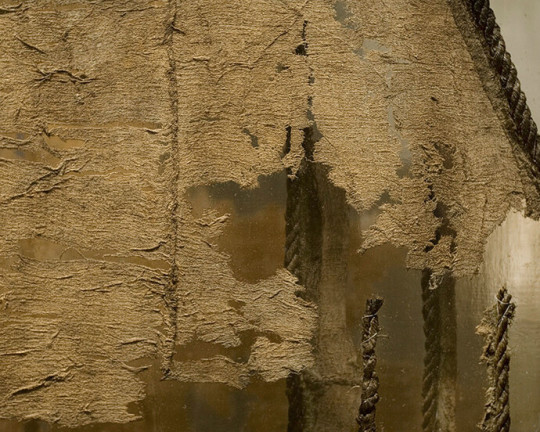
The fragile sails were then attached to a support with a lower concentration of the same acrylic solution. In total, this process took 10 years and of the 650 square metres of sails found, only one is on display today - the fore topgallant sail.
#vasa#fabric conservation#museum conservation#conservation#hemp line#17th century#textiles#textile conservation#museum textiles
252 notes
·
View notes
Text

Ngl i prefer the 2016 version purple on the right.
27K notes
·
View notes
Text
girl help I'm getting they/them'd by well-meaning people who don't know what a tomboy is
55K notes
·
View notes
Text
i love the artistic stylings of studio ghibli as much as anyone else does but im kind of sick of anything with like vivid environments and big blue skies being branded as ghibliesque. because its like. you know where else you can hypothetically find some vivid environments with big blue skies? my friend the great and wonderful outdoors are here for you
20K notes
·
View notes
Text
indeed, I can confirm
I can connect anything to trains, just watch me, give me a topic and I'll connect it to trains for you
1K notes
·
View notes
Text
someone used the Tyrannian Paint Brush on their gelatinous cube
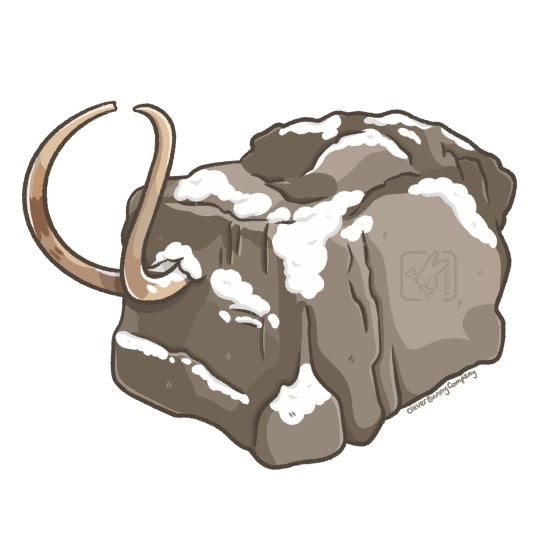
Mammoth Cube Mammoth Cube Mammoth Cube




Known as the Jarkov Mammoth, this specimen was found in Siberia. The 23 tonne block of mud and ice was lifted to an ice cave where the mammoth inside was recovered and studied.
#mammoth#paleoblr#mammoth cube#jarkov mammoth#neopets#it’s been decades since I played#literal decades#and yet
1K notes
·
View notes
Text
I’m cheering for you! 🧶🫶🏻
Someone yell at me to do maths, my loom is crying out to be used but I need to do calculations first
15 notes
·
View notes
Text
Gender solid to genderfluid trans solidarity must exist as much as any trans solidarity must exist.
Protect my- sorry, what are your pronouns today? Oh, cool, thanks
Transfem to Transmasc solitary must exist as much as any trans solidarity must exist.
Protect my boys.
11K notes
·
View notes
Text
I can connect anything to trains, just watch me, give me a topic and I'll connect it to trains for you
1K notes
·
View notes
Text
“Years and years ago, there was a production of The Tempest, out of doors, at an Oxford college on a lawn, which was the stage, and the lawn went back towards the lake in the grounds of the college, and the play began in natural light. But as it developed, and as it became time for Ariel to say his farewell to the world of The Tempest, the evening had started to close in and there was some artificial lighting coming on. And as Ariel uttered his last speech, he turned and he ran across the grass, and he got to the edge of the lake and he just kept running across the top of the water — the producer having thoughtfully provided a kind of walkway an inch beneath the water. And you could see and you could hear the plish, plash as he ran away from you across the top of the lake, until the gloom enveloped him and he disappeared from your view. And as he did so, from the further shore, a firework rocket was ignited, and it went whoosh into the air, and high up there it burst into lots of sparks, and all the sparks went out, and he had gone. When you look up the stage directions, it says, ‘Exit Ariel.’”
— Tom Stoppard, University of Pennsylvania, 1996 (via flameintobeing)
29K notes
·
View notes
